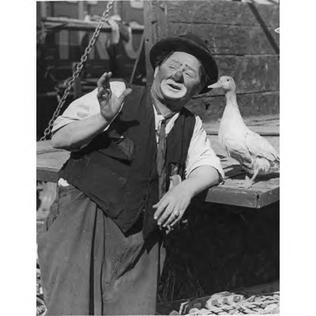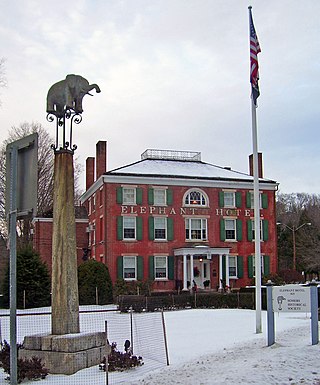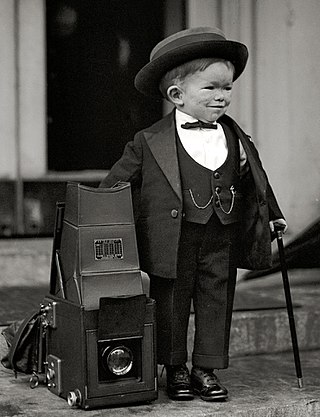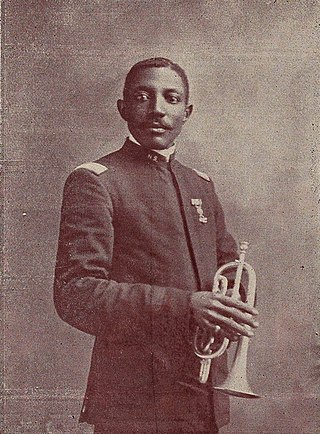
John L. Sullivan, (circa 1860 - April 1932), was a tuskless male Asian elephant that performed in the Adam Forepaugh circus and, later, in the Ringling Brothers Barnum and Bailey Circus.

John L. Sullivan, (circa 1860 - April 1932), was a tuskless male Asian elephant that performed in the Adam Forepaugh circus and, later, in the Ringling Brothers Barnum and Bailey Circus.
In the early days of its career, John L. (who was named after the boxer John L. Sullivan) performed a boxing act with his trainer, Eph Thompson. [1] [2] John would have a boxing glove placed at the end of his trunk to spar with Thompson. John stayed with the circus as the Forepaugh show joined with the Sells Brothers Circus, which then joined with the Ringling Brothers Circus.
Old John, as he came to be known, stayed on with the circus after he retired from performing. He babysat for the performers' children, did heavy lifting, and led the elephant herd to and from the show grounds and train. [3]
On 9 April 1922, John, with Dexter Fellows, began a 53 mile pilgrimage from Madison Square Garden to the Elephant Hotel in Somers, New York, to pay tribute to Old Bet, the first elephant in America. John arrived on 13 April 1922. He laid a wreath on the monument to Old Bet. [2] [4]
He died of old age or of heart failure in Sarasota, Florida in 1932. [1] [5]

James Anthony Bailey, was an American owner and manager of several 19th-century circuses, including the Ringling Bros. and Barnum & Bailey Circus.

The Ringling Bros. and Barnum & Bailey Circus, also known as the Ringling Bros. Circus, Ringling Bros., the Barnum & Bailey Circus, Barnum & Bailey, or simply Ringling, is an American traveling circus company billed as The Greatest Show on Earth. It and its predecessor have run shows from 1871, with a hiatus from 2017 to 2023. They operate as Ringling Bros. and Barnum & Bailey. The circus started in 1919 when the Barnum & Bailey's Greatest Show on Earth, a circus created by P. T. Barnum and James Anthony Bailey, was merged with the Ringling Bros. World's Greatest Shows. The Ringling brothers purchased Barnum & Bailey Ltd. in 1907 following Bailey's death in 1906, but ran the circuses separately until they were merged in 1919.

Ringling Bros. World's Greatest Shows is a circus founded in Baraboo, Wisconsin, United States in 1884 by five of the seven Ringling brothers: Albert, August, Otto, Alfred T., Charles, John, and Henry. The Ringling brothers were sons of a German immigrant, August Frederick Rüngeling, who changed his name to Ringling once he settled in America. Four brothers were born in McGregor, Iowa: Alf T., Charles, John and Henry. The Ringling family lived in McGregor, Iowa, for twelve years, from 1860 until 1872. The family then lived in Prairie du Chien, Wisconsin, and moved to Baraboo, Wisconsin, in 1875.

The Hagenbeck–Wallace Circus was a circus that traveled across America in the early part of the 20th century. At its peak, it was the second-largest circus in America next to Ringling Brothers and Barnum and Bailey Circus. It was based in Peru, Indiana.

Stuart LeRoy Thayer was a historian of American circuses.

John Nicholas Ringling was an American entrepreneur who is the best known of the seven Ringling brothers, five of whom merged the Barnum & Bailey Circus with their own Ringling Bros. World's Greatest Shows to create a virtual monopoly of traveling circuses and helped shape the modern circus. In addition to owning and managing many of the largest circuses in the United States, he was also a rancher, a real estate developer and art collector. He was inducted into the Florida Artists Hall of Fame in 1987.

Adam John Forepaugh was an American horse trader and circus owner. From 1865 through 1890 his circus operated under various names including Forepaugh's Circus, Forepaugh's Gigantic Circus and Menagerie, The Forepaugh Show, 4-PAW Show, The Adam Forepaugh Circus, and Forepaugh & The Wild West.

Clyde Raymond Beatty was a famed animal trainer, zoo owner, and circus mogul. He joined Howe's Great London Circus in 1921 as a cage boy and spent the next four decades rising to fame as one of the most famous circus performers and animal trainers in the world. Through his career, the circus impresario owned several circuses, including his own Clyde Beatty Circus from 1945 to 1956.

Otto Griebling was a German-born circus clown who performed for many years with the Cole Brothers and Ringling Bros. and Barnum & Bailey Circuses. He was one of four clowns given the title Master Clown by Irvin Feld.

The Sells Floto Circus was a combination of the Floto Dog & Pony Show and the Sells Brothers Circus that toured with sideshow acts in the United States and Canada during the early 1900s.

Old Bet was the first circus elephant and the second elephant brought to the United States. There are reports of an elephant brought to the United States in 1796, but it is not known for certain that this was the elephant that was later named Old Bet.

The Ringling brothers were five American siblings who transformed their small touring company of performers into one of the largest circuses in the United States during the late 19th and early 20th centuries. Four brothers were born in McGregor, Iowa: Alfred T., Charles, John and Henry William, and the family lived in McGregor for twelve years, from 1860 until 1872. The Ringling family then moved to Prairie du Chien, Wisconsin, and finally settled in Baraboo, Wisconsin, in 1875. They were of German and French descent, the children of harness maker Heinrich Friedrich August Ringling (1826–1898) of Hanover, and Marie Salome Juliar (1833–1907) of Ostheim, in Alsace. While there were seven Ringling brothers, Alfred, Charles, John, Al and Otto Ringling were the main brothers in charge of the circus shows. All of the brothers were Freemasons. In 1919, they merged their Ringling Brothers Circus with America's other leading circus troupe, Barnum and Bailey, ultimately creating the Ringling Bros. and Barnum & Bailey Circus, which has operated continuously since except for a hiatus from 2017 to 2022.

Bello Nock, often known simply as Bello, is an American daredevil and circus performer. Nock has been listed in the Guinness Book of World Records for his highwire walk over a cruise ship. He has performed several stunts in New York City, including rappelling off of Madison Square Garden and hanging from a helicopter over the Statue of Liberty. He has been included in a Time magazine list of "America's Best Artists and Entertainers".
Circus Polka: For a Young Elephant was written by Igor Stravinsky in 1942. He composed it for a ballet production that the choreographer George Balanchine did for Ringling Bros. and Barnum & Bailey Circus. The ballet was performed by fifty elephants and fifty ballerinas. In 1944, Stravinsky published an orchestration of the piece, which is now part of the repertoire of many orchestras.

Al G. Barnes Circus was an American circus run by Alpheus George Barnes Stonehouse that operated from 1898 to 1938.

Madison Square Garden was an indoor arena in New York City, the third bearing that name. Built in 1925 and closed in 1968, it was located on the west side of Eighth Avenue between 49th and 50th streets in Manhattan, on the site of the city's trolley-car barns. It was the first Garden that was not located near Madison Square. MSG III was the home of the New York Rangers of the National Hockey League and the New York Knicks of the National Basketball Association, and also hosted numerous boxing matches, the Millrose Games, the National Invitation Tournament, Ringling Bros. and Barnum & Bailey, concerts, and other events. In 1968 it was demolished and its role and name passed to the fourth Madison Square Garden, which stands at the site of the original Penn Station. One Worldwide Plaza was built on the arena's former 50th Street location.

Clarence Chesterfield Howerton, also known as Major Mite, was an American circus performer who starred in the sideshow for over 25 years, 20 of which were with the Ringling Bros. and Barnum & Bailey Circus. He was 2 ft 4 in (0.71 m) tall and performed with several groups from the early 1920s through the late 1940s, billed as the smallest man in the world. His small physique was often contrasted alongside larger circus sideshow acts, such as the juvenile obese and the excessively tall, and he was at the movie THE WIZARD OF OZ.

John H. Robinson created the John Robinson Circus, whose winter quarters were in Terrace Park, Ohio.

Perry George Lowery was an American composer, conductor, cornet player, and a circus sideshow manager of African American entertainment and musical ensembles.
An old, old elephant will start out this afternoon from Madison Square Garden on a pilgrimage to the grave of the first elephant that ever came to the United States.
The memorial services for Old Bet in Somers, N.Y., yesterday, solemn except for the part which old Pap Fellowes and the cornet played, were all that anybody. even Old Bet herself, might have wished. But it is true that Pap sort of gummed things up. Pap did something to the cornet out behind ...